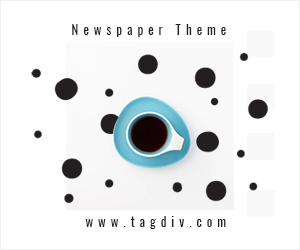By Daniel Newman and Kenan Fikri
Key Findings:
- Nearly 5.4 million applications were filed to form new businesses in 2021 — the most of any year on record, based on the latest data from Census Bureau’s Business Formation Statistics.
- The exceptional pace means there were roughly 1.9 million more business applications in 2021 — a 53 percent increase from 2019 and a notable improvement on that especially strong year for economic performance.
- Nearly one-third, or 1.8 million applications, were for likely employer businesses — a subset of total applications capturing those most likely to hire employees if and when a business becomes operational.
- Likely employer business applications are up 37 percent over 2019 levels and up 17 percent relative to 2006, the prior peak. Seven of the top 10 highest monthly totals for likely employer filings came last year.
- Applications for businesses likely to hire employees rose in every state in 2021, but faster in some parts of the country than others, especially in the Southeast.
Introduction
The Covid-19 pandemic disrupted the economic status quo in many unexpected ways over the past two years. While some of these changes have been unwelcome — high inflation rates not seen in decades and supply chain issues leaving store shelves barren — one of the most potentially beneficial developments is the unexpected explosion of new business applications that began taking shape in the summer of 2020. Contrary to expectations, that year turned out to be the best for business applications on record — only to be surpassed in 2021.
A record 5.4 million applications were filed to form new businesses in 2021 based on data from the U.S. Census Bureau’s Business Formation Statistics. This potential entrepreneurial boom in the midst of the pandemic looks nothing like what occurred after the last economic crisis when intentions to form new businesses declined for two straight years amid the economic turmoil of the Great Recession. The latest statistics suggest that the pandemic delivered a meaningfully positive shock to American entrepreneurship that may have significantly altered established trends.
New business formation traditionally helps power economic recoveries, as entrepreneurs and new growth companies take advantage of new market opportunities as well as the resources freed up by firms that contracted or failed during recessions. This mechanism broke down somewhat in the wake of the prior economic crisis, and the depressed startup rates that persisted throughout the 2010s may have contributed to the slow and uneven nature of the recovery that followed. The starkly contrasting ongoing flood of applications this time is an important and promising indicator for the strength of the recovery ahead. While credit was dramatically curtailed and significant amounts of wealth wiped out during the Great Recession, the massive federal support during the pandemic through programs such as the Paycheck Protection Program and stimulus payments to millions of Americans may have helped support existing small businesses and encourage their formation during this latest economic upheaval.
And yet, while the present surge in applications is notable, it provides only a forward-looking indicator that hints at future potential economic activity. It takes time for an application for a new Employer Identification Number, or EIN (the underlying variable tracked here), to actually turn into a new business, and just a fraction of applications typically complete the journey. Individuals and corporations have many different reasons for applying for EINs, and not every instance reflects a true new company formation in the colloquial sense. Nevertheless, the durability and widespread nature of the surge suggests that it is capturing a true groundswell of entrepreneurial interest in the United States as the pandemic upends industries and careers.
This analysis highlights four major takeaways for business formation that defined 2021. Most comparisons are made relative to 2019 in order to explicitly highlight how Covid-19 has dramatically altered prior trends.
Total business applications were the highest on record in 2021 — a stunning 53 percent jump above the total filed in 2019 and 23 percent higher than in 2020.
Nearly 5.4 million applications were filed to form new businesses in 2021 — the most of any year on record going back to 2005, based on the latest Census data. The exceptional pace of filing translates into roughly 1.9 million more business applications in 2021 than in 2019 before the pandemic, a 53 percent increase.
The surge in new business filings began in mid-2020, and the latest data show that it has sustained itself through the close of 2021. The 2021 total came in 23 percent higher than in 2020 when nearly 4.4 million were filed by that year’s end. Even though the monthly trends show signs of plateauing, there is little evidence that the pace of new business filings will fall back towards pre-pandemic levels any time soon. In the years prior to the pandemic, total monthly applications averaged just under 300,000, seasonally adjusted. In 2021, they averaged around 450,000.
Annual new business applications doubled in the transportation and warehousing sector between 2019 and 2021.
The new business surge is broad-based, and total business applications in 2021 were up universally across all major industry sectors¹ relative to 2019 levels, demonstrating just how much the pandemic has transformed the economy. The top five largest percentage increases were in transportation and warehousing; retail trade; accommodation and food services; administrative and support; and other services (a general category including activities such as personal care services and laundry services). Some of the growth in these sectors likely reflect shifts in economic activity during the pandemic to meet increased demand for home-based services. In that sense, the data on new business applications also provides important indicators of the adaptability of the U.S. economy to respond to and reincorporate around changing opportunities.
Amid ongoing supply chain issues that hindered the operations of many businesses last year, new applications in the transportation and warehousing sector more than doubled between 2019 and 2021, the largest increase among all industries by far. This sector had registered the highest startup rates in the economy in 2019 and now appears poised to extend its strong growth. Businesses in this sector specialize in storage of goods as well as the modes of transport for those goods, and the rapid expansion of applications is somewhat expected given the tremendous increase in the amount of goods being transported directly to consumers throughout the pandemic.
Retail trade, the second-fastest-growing major sector, made up the largest overall proportion of applications in 2021. Just over 18 percent of all applications were in the retail sector in 2021, up from about 15 percent two years prior thanks to an increase in filings from 523,000 to 978,000. The vast majority of 2021 applications to form a retail business (78 percent) were unlikely to hire employees, based on the Census Bureau’s estimation (about 5 percentage points higher than in 2019). That is because many applications from this sector during the pandemic have been from so-called non-store retailers that typically sell goods online or deliver them directly to their clients. A spike in this sector is intuitive given how the pandemic has shifted consumption patterns solidly in that direction.
Applications for firms most likely to hire employees also reached record levels in 2021, increasing by 37 percent relative to 2019 and surpassing 2020’s exceptional total by 21 percent.
The Census data breaks out one particular subset of applications that appear especially likely to proceed to hire workers based on their industry or other information provided (“high propensity business applications,” or “likely employers”), with the remainder falling into a more generalized bucket that includes such entities as non-employer businesses, gig workers, or sole proprietorships.
In 2021, Americans filed a record-breaking 1.8 million applications to form high-propensity businesses — the economically consequential subset of total applications capturing those most likely to hire employees if and when a business becomes operational. These likely employer applications were up 37 percent from 2019 levels, surpassing that pre-pandemic year by 481,000. Seven of the top 10 highest monthly totals for likely employer filings came last year, which helped push the total haul above the level recorded in 2006, the former top-performing year, by 17 percent.
Nearly one-third of all applications last year were for likely employer businesses. These potential startups are particularly important because they represent the businesses most likely to lead to lasting job growth and innovation. The increase was broad-based across most major sectors (only wholesale trade, agriculture, and mining did not surpass their 2019 levels), but certain industries led the growth. Nearly three-quarters of the overall gains above the 2019 total appear in five industry sectors: accommodation and food services; retail trade; health care and social assistance; professional services; and transportation and warehousing.
These leading sectors typically produce large numbers of business applications under normal economic conditions (representing 55 percent of all likely employer filings in 2019), but they also make up an outsized portion of the gains recorded during the pandemic: applications in 2021 to form likely employer businesses in the transportation and warehousing sector are up 71 percent over the same point in 2019, while accommodation and food services is up 67 percent, and the retail trade sector is up 48 percent. The health care and social assistance sector has also experienced rapid increases in potential business formation — up 33 percent relative to 2019. These high-growth sectors experienced extreme shocks to their normal operations throughout the pandemic, and the jump in intent to form new businesses likely reflects a necessity to adapt in response to job losses during the downturn as well as an opportunity to fill new economic needs amid changing consumer preferences, supply chain issues, and novel circumstances brought on by the pandemic.
Likely employer business applications are up in every state, but some unexpected corners of the country experienced especially high growth relative to pre-pandemic.
Likely employer business applications rose in every state in 2021, but they rose faster in some parts of the country than others, especially in the Southeast. Four of the top five states with the highest growth were in the Southeast (Mississippi, Louisiana, Georgia, and Delaware), while Wyoming rounded out the group. By contrast, several states in the Pacific Northwest, Upper Midwest, and New England regions are seeing their likely employer business application grow at a much slower rate. Alaska experienced the slowest growth, surpassing its 2019 level by only 1.7 percent.
The growth rate map raises several questions. The strong performance of Delaware (+66.5 percent) and Wyoming (+74.3 percent) likely come down to their traditional roles as jurisdictions of choice for new incorporations due to favorable legal and tax regimes. Both went from having just over two-times as many likely employer business applications per 1,000 residents as the United States as a whole in 2019 to just under three-times as many in 2021, disproportionately benefitting from the national wave. While a broadly business-friendly policy orientation and a loose approach to COVID-19 restrictions could feasibly explain some of the South’s relative strength on this measure, variation within the region looks more perplexing. Normal factors that drive business applications higher, such as high population growth rates, do not explain which states lead the region, for example: Mississippi and Louisiana both lost population last year. And given high local poverty rates–indeed the two highest poverty rates in the country in the case of Mississippi and Louisiana–a push into self-employment out of necessity could be as much an explanation as the pull of clear new business opportunities–considerations which would color how one interprets the surge.
At any rate, finding the underlying explanations for state-level variation may be key to unlocking bigger questions about what exactly is being captured in by these promising but early-stage indicators of future economic activity, and how economically significant that activity will likely prove to be.
Differential growth rates aside, a handful of states are capturing the bulk of the growth by volumes recorded since the pandemic began. Of the 3.0 million likely employer applications filed since March 2020, more than half were located in just six states: Florida, California, Texas, New York, Georgia, and Illinois — some of which are among the most populous, fastest-growing, or economically dynamic places in the country — and a reminder that behemoths such as California, New York, and Illinois that often lag on growth measures (each experienced population loss last year, for example) still account for massive amounts of the nation’s new economic activity.
A promising development for the U.S. economy
The surge in new business applications remains promising nearly two years since the pandemic began, but it will be some time before we have a full picture of the net effect of the pandemic on the country’s business and entrepreneurial landscape. In December 2021, there were still nearly 3.6 million fewer people employed full-time in the United States than at the start of the pandemic, based on figures collected by the Bureau of Labor Statistics, yet the number of unincorporated self-employed workers had increased by 349,000 over that same period — a modest sign that some of those missing workers may have decided to chart a new economic path through entrepreneurship in unprecedented times.
While it will take months to evaluate how many of these expressions of entrepreneurial intent covered in the business formation statistics actually turn into new firms that go on to hire workers, any increase in the creation of new firms will be a boon for the U.S. economy: EIG’s analysis of Census data on business dynamics showed that the pandemic has brought a welcome and disruptive end to a lost decade in American entrepreneurship. Heading into the pandemic, the country’s startup rate — the share of all firms in the economy that were formed within the past year — stood stable at 8.2 percent in 2019, essentially unchanged from 2018 and only slightly above the all-time low reached after the Great Recession.
If the past is any guide, research shows there has been a historically high correlation between the number of applications filed and true business formation months afterward. A substantial number of these applications turn into real new firms, and their survival and growth will help power the economic recovery. However, at the same time, there are reasons to be cautious. Not only is the number of true startups taking shape still unknown, but firms launched in recessions also tend to remain smaller than those launched during good times — leaving their potential impact on job creation unknown, too.
Ensuring that many of these likely employer applications do in fact turn into successful businesses with paid employees will help smooth our transition out of this pandemic. This entrepreneurial reaction to the economic shock is a testament to the U.S. economy’s underlying resiliency. Maintaining this high level of new business formation will be crucial in placing the economy on a strong and durable path to its recovery and will help eliminate the startup deficit that had built up in recent years.









































